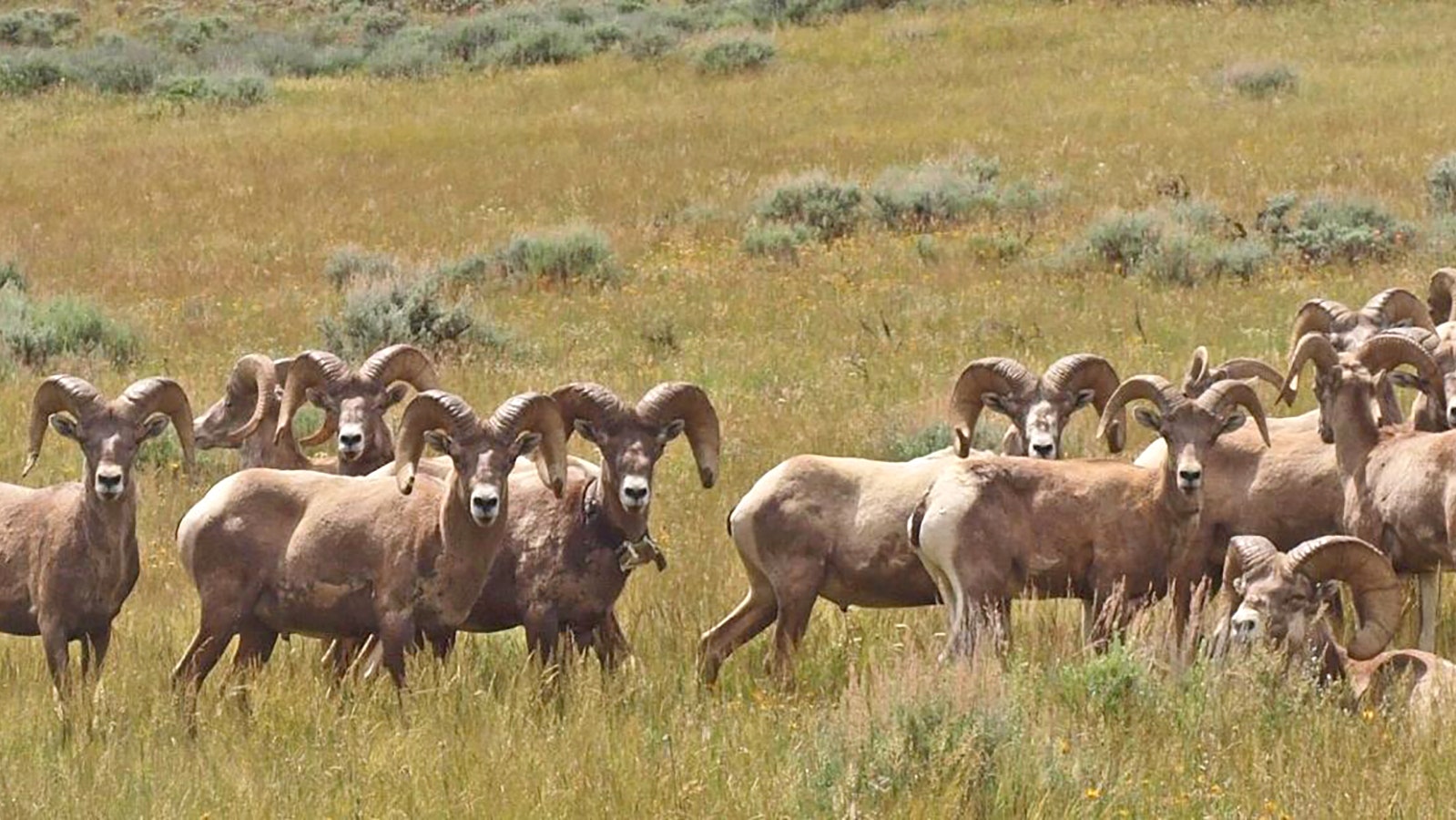A new pathogen is killing bighorn sheep in Wyoming’s Bighorn Canyon National Recreation Area, and it has the potential to permanently destroy an entire herd.
Nearly 40 bighorn sheep were reintroduced to the Devils Canyon area in 1973 to establish a new herd. The Devils Canyon Sheep Herd has been augmented twice since then by an additional 20 sheep in 2004 and another 20 in 2006.
Over the last 15 years, the bighorn sheep population has been growing well, reaching as high as 260 sheep. Now, all that progress could be undone.
Death In Devils Canyon
In the last year, dozens of bighorn sheep in the isolated Devil’s Canyon herd have died from pneumonia caused by the introduction of a novel pathogen. After high mortality from it last fall, the pathogen returned and caused more deaths this summer.
“The initial Devils Canyon die-off event occurred between October and December of 2022, where an estimated 44% of the herd was lost due to pneumonia,” said Sam Stephens, a wildlife biologist with the Wyoming Game and Fish Department’s Cody office. “The initial outbreak seemed indiscriminate regarding the sex and age of affected sheep.”
When the outbreak ended, there were no further deaths related to the pathogen in the fall or winter. But this summer, the department was alerted of another large die-off of bighorn sheep.
Radio collars are crucial tools for monitoring Wyoming wildlife. Since the Devils Canyon bighorn herd is so remote, collared animals provide essential information on the herd’s health and status, including mortalities.
In the fall 2022 oubreak, Stephens noticed a pattern. When one collared sheep died, there were more uncollared sheep lying dead nearby.
In Late July, the department was alerted that several collared sheep in the Devils Canyon herd had died, and an aerial survey was used to investigate the herd and assess the loss.
“Of the remaining 13 collared ewes, we lost 11 within the span of four weeks (85%),” he said. “Including collared animals, we detected a total of 15 dead individuals, all of which were ewes.”
Stephens counted 142 sheep during this survey. No deceased lambs or rams were detected from the latest outbreak.
Fast And Furious
Pneumonia is the disease killing the bighorn sheep, and this strain is being caused by Mannheimia haemolytica, which afflicts cattle, sheep and other ruminants.
Jessica Jennings Gaines, a wildlife disease specialist at Game and Fish, says this pathogen is less understood than other known pneumonia-causing pathogens, but its impact is fast and brutal.
“Mannheimia haemolytica seems to be a nastier bug that causes disease quicker and more severely than other respiratory pathogens that we find in our bighorn sheep herds,” she said. “While this bacteria can cause acute, all-age die-off, its impact on the specific sheep population seems to be short-lived.”
This isn’t the first time Mannheimia haemolytica has caused a pneumonia outbreak in a Wyoming bighorn sheep herd. It was first detected in the Laramie Peak herd in Medicine-Bow Routt National Forest during the winter of 2020-2021.
Stephens said the department has yet to identify how the pathogen was introduced to the Devils Canyon herd given the extent and complexity of the herd’s range.
“The Devils Canyon sheep population is complex in that we have the core population living between Trout and Porcupine Creek canyons, and several sub-populations which live along the banks of Bighorn Reservoir and further north into Montana where our access and subsequent understanding of these sheep is limited,” Stephens said. “We have documented connectivity amongst these sub-populations only from the occasional dispersal of collared rams.”
Also Killed Hunting Opportunities
These deaths are impacting the ability for hunters to get a once-in-a-lifetime bighorn sheep tag. After last year’s die-off, Type 1 licenses for rams were reduced from eight to two. Ewe licenses were eliminated altogether.
Stephens doesn’t know the full impact of the latest pneumonia outbreak and the total die-off. But the numbers already observed are concerning.
“The primary concern is that too few sheep remain in the herd to rebound back to levels which predated the initial die-off. Our last aerial survey was conducted in early July where we counted 142 sheep. It's unknown what the impact of this latest disease outbreak was,” he said.
Despite this, Stephens isn’t making any general assumptions from the fall and summer die-offs. More information is needed to assess the Devil Canyons sheep herd’s health and future.
“While the loss of 11 of 13 collared animals is significant, we are cautious not to extrapolate these metrics to the whole population since it's such a small sample size,” he said. “Because these animals were captured and collared in 2019, our sample (collared) population were older animals relative to the rest of the herd.”
The Wyoming Game and Fish Department will have a better handle on the cumulative impact on the Devils Canyon herd when biologists conduct another aerial survey this winter.
Andrew Rossi can be reached at arossi@cowboystatedaily.com.





